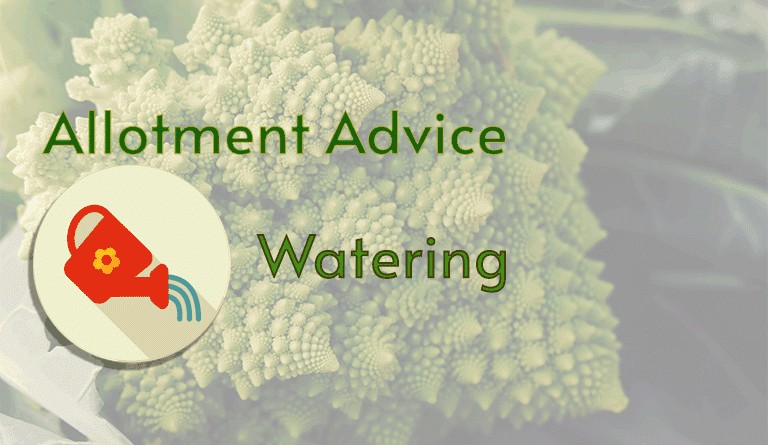Allotment Advice – Watering and Water Conserving
Any gardener or allotment plot holder will confirm, unsurprisingly, that water is an essential ingredient for all crops, and at Colchester Avenue allotments, we’re lucky to have a supply of running water. But this resource doesn’t come for free, and because we have access to a mains water supply doesn’t mean we should take advantage of this and not put any effort into conserving water and collecting our own water.
In this article we’ll explain some ideas for how you can conserve water as well as ways to collect your own and also outline the water needs for some of the more popular crops.
For an average plot in South Wales and the West and estimated 1750 litres of water are required to keep your plot watered and healthy so being mindful of how and when you collect and use water is important. If you harvest rain water using water butts for example you can collect approximately 80% of the water you need for you plot this way. Cardiff Council no longer sell water butts, but Amazon have a large selection available here, as well as the kit needed to ensure rain water which runs off your shed is collected correctly. For those who can’t afford the connecting kit, with a bit of drain pipe, some cable ties and a bit of ingenuity you can set your own collection point up pretty easily and cheaply. Another tip for water butt users is a tablespoon of cooking on added to the water will help prevent mosquitoes and other water breeding insects from invading your supply. Speaking of which, your water butt should always have a lid on it, this ensures it’s safe for animals and children who have been known to fall into water butts. If you’re butt isn’t connected to your sheds run off via piping, you can leave the lid off your butt, just be mindful of this keeping an eye on the inside of the butt.
When to water..
If you don’t already know, watering early in the morning or in the evening is the best time to water your crops, ensuring maximum water is used doesn’t just evaporate in the sun. Unless your crop specifies, then the best place to water is near the roots/soil and not on the foliage. Even when we’re in the middle of summer, soaking your soil once a week with a good amount of water should be sufficient for up to a week for many of your crops, many people overestimate how much water they need for their crops for take a look below for some watering tips for specific crops.
- Root Vegetables – Water well before dry conditions, if you don’t you’ll find your crops splitting.
- Potatoes – Water regularly 7 – 10 weeks after you’ve planted them when you can see the tubers developing.
- Celery, celeriac and fennel need regular watering, soaking the soil because they won’t last long in dry conditions.
- For beans and peas keep the plants moist when young, don’t over water them, once they’re flowering give the soil a good soak then about 1-2 weeks later. French beans can handle some dry conditions but runner beans (as many of us know) need constant moisture.
- Courgettes need to be kept moist at all times, while its cousin, the squash requires minimum watering.
- Tomatoes need constant water when growing and are very thirsty, as are sweetcorn and cucumbers.
- Brassicas and leafy salads need a good water at every growth stage.
- When strawberries are in their growing cycle, they require a good watering and won’t do well if the soil dries out.
- Raspberries can do well if you soak the soil once a week with a depth of about 10 inches.
To help reduce your water needs, some simple tips will give you as head-start.
- Digging in good organic matter (mulching) will help the soil retain the water is comes in contact with. And apply this mulch while the soil is warm and already moist if possible.
- Weed, weed and weed again. One of the ways weeds can hinder a plot holders ability to grow successfully is by stealing the water which falls on the plot. So weed regularly. If you’re a new plot holder and have a lot of weeds, just cover them with weed suppressant fabric (available cheaply from the site, get in contact if you’d like to purchase some).
- Use water butts as mentioned above. If you don’t have one yet, any empty vessel (buckets, bowls, watering cans), leave out to collect rain, just don’t let any open vessels sit on your plot full of water for longer than a day or so.
Let us know in the comments if you have any other tips or suggestions.






